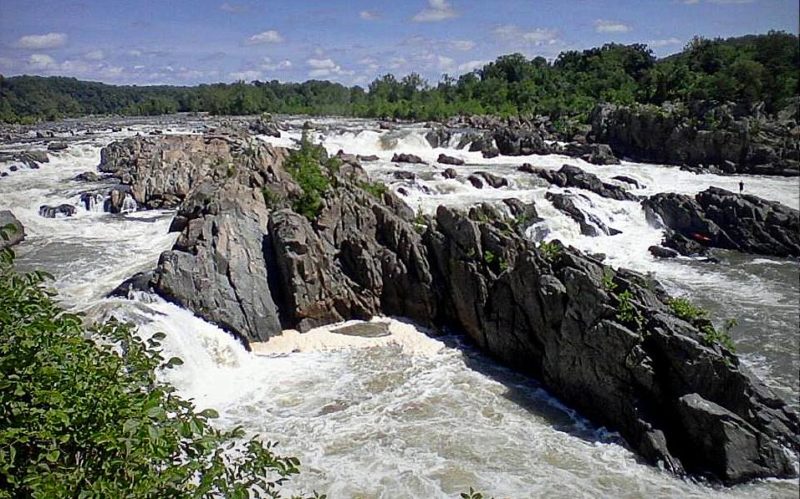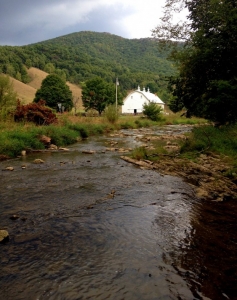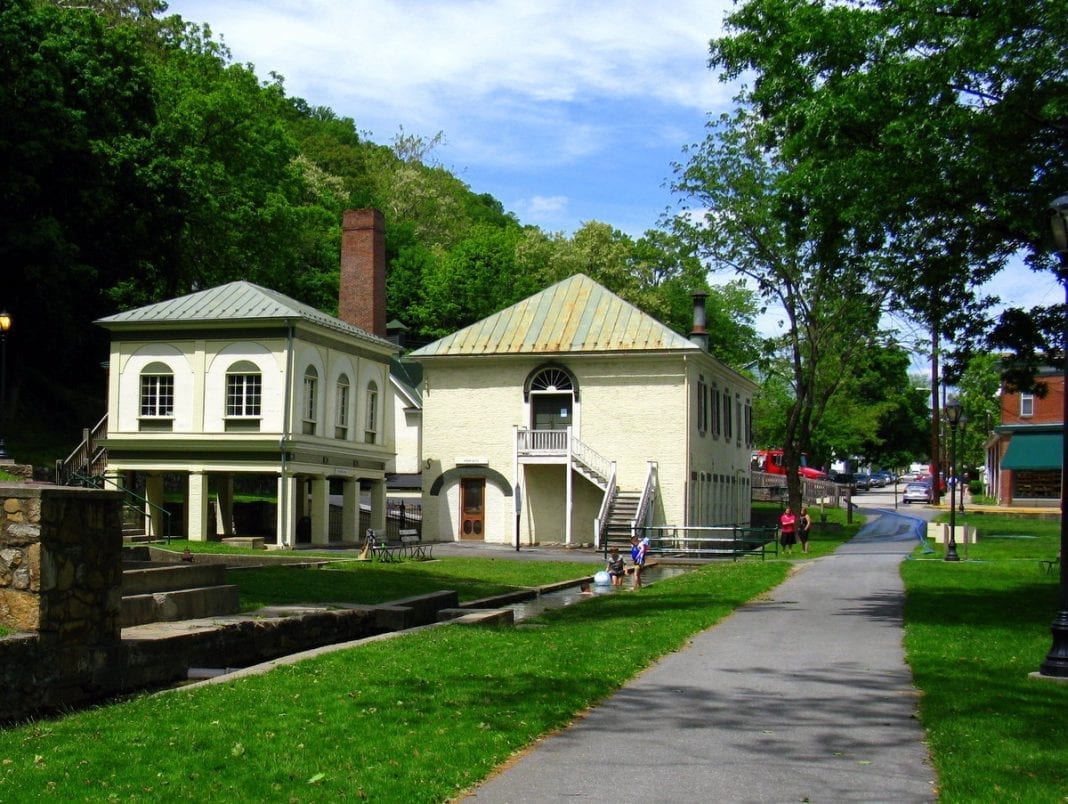
There’s something special about visiting the birthplace of a river — something almost magical about seeing water come up from the ground and knowing that it will, after many miles and many joinings, become a grand river. Most of us don’t often think about how a river is born or how far a small creek travels. We look at rivers and see them for what they are in front of us — fully formed, ready for tubing and kayaking and fishing.
Recently I had the occasion to visit the Great Falls of the Potomac River near Washington, D.C., and the headwaters of the South Branch of the Potomac River at Blue Grass, Virginia, one of the two birthplaces of the Potomac River.
We know that rivers begin high in the mountains, born of rain or melting snow. Some spring from underground streams. Some (and I have had the distinct pleasure of seeing this) begin deep inside caves tucked into the mountainsides. Water flows downhill, meets with other creeks and streams, and turns into a river. Rivers meet other rivers and make even bigger rivers, like the Potomac, which eventually flow into an ocean.
The Potomac, the mighty river of our nation’s capital, has its beginnings at two different springs in two states. The North Branch surfaces near Davis at the Fairfax Stone. According to an article in the W.Va. Encyclopedia, the stone “marked the western extent of the Fairfax estate, one of Virginia’s largest colonial land grants, and extended to the headwaters of the Potomac River. Setting of the stone in 1746 at the source of the North Branch of the Potomac helped establish it as the river’s main stem.”
Ninety-seven miles later it meets the South Branch of the Potomac, the headwaters of which surface in Blue Grass, Virginia, just outside of Monterey, in Highland County.
It is here that I dangle my toes off a low-water bridge while picnicking in dappled shade. No more than a rock-strewn creek with minnows darting in and out of small pools, it gurgles along without a care in the world. It would seem to have no idea that it will, almost a hundred miles later, meet its twin in West Virginia to create one of the nation's great rivers.
My shoulders drop as I listen to melody of the water. Its cadence and rhythm soothe my soul. Like waves on the seashore that remind me to breathe with each crash of the surf, this small creek reminds me of the musicality of this world.
I relax and sit very still. Birds chime in to add their own section to the orchestra. If the stream were the string section, these feathered friends and the leaves rustling around them are the woodwinds. A deep rumble of a car passes occasionally, adding a bit of percussion. I secretly hope for the deep bass of a bullfrog to round out my private concert.
Flowing north, the South Branch travels into West Virginia, where it meets its sister branch in Green Spring at Maryland border. Farther downstream, at Harpers Ferry, the Shenandoah, another mighty river, enters the Potomac. What happens when two mighty rivers join? Awesome power! If you have ever had the occasion to visit Harpers Ferry in the spring, you know you can almost feel the rivers surging below the town.
An hour's drive downstream, the Potomac skirts Washington, D.C., and travels through Mather Gorge, and this is where all the power of the river crashes against the rocks with abandoned fury. Both the southern branch and the Great Falls are reminders that Mother Nature has been working her turf for millennia, and we humans are mere onlookers.
Great Falls is unlike any waterfall I have ever visited. Enormous, jagged rocks push up from the river bottom through the gorge, looking for all the world like some hellscape designed to lure kayakers to their demise. Yet, kayakers go. One was literally playing with the falls while we were there, darting in and out of wave trains with a bravado I will never have.
Whereas the small creek that become the South Branch is tranquil, the behemoth of Great Falls is not. It is the scene of raw, pounding water — being funneled through a small gorge with such intensity and force it's a wonder it has never been dammed for an electric plant. It is loud, roaring, and exhilarating to watch from overlooks high above. Surely this is the crescendo of my symphony.
Sign up to receive a FREE copy of West Virginia Explorer Magazine in your email weekly. Sign me up!


